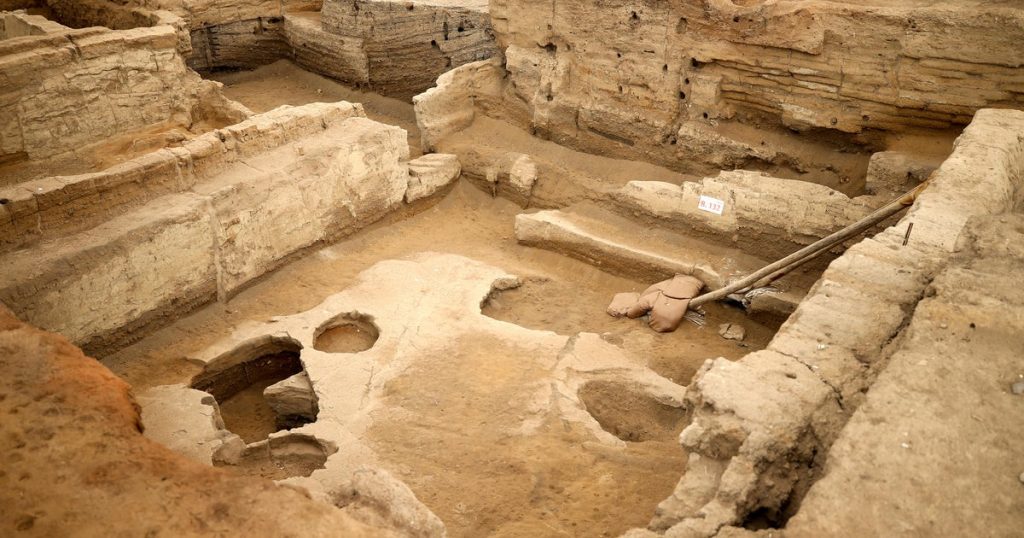A recent study reveals that the ancient city of Çatalhöyük may have been governed by a female-led society over 9,000 years ago. Researchers who examined the genomes of over 130 skeletons from one of the best-preserved Neolithic settlements in southern Anatolia, Turkey, suggest a matriarchal structure based on burial practices and genetic connections. The findings challenge traditional views on societal lineage, highlighting the importance of maternal ties in ancient communities.
| Article Subheadings |
|---|
| 1) Çatalhöyük: An Overview of the Ancient City |
| 2) Groundbreaking Research Techniques in Ancient DNA Analysis |
| 3) Maternal Lineage and Burial Practices |
| 4) Implications of a Matriarchal Society |
| 5) Relevance of Findings in Modern Understanding of Mankind |
Çatalhöyük: An Overview of the Ancient City
The ancient city of Çatalhöyük is located in southern Anatolia, Turkey, and is one of the most significant archaeological sites from the Neolithic period. This settlement was inhabited for more than a millennium, from around 9000 to 8000 BCE, showcasing a sophisticated way of living characterized by its unique architectural structures. Known for its mudbrick houses and elaborate wall paintings, Çatalhöyük is often cited as one of the earliest urban centers. The city features extraordinary artifacts, including figurines that may represent a “Mother Goddess,” hinting at the potential role of female figures in their society. These aspects have led researchers to speculate about the community’s possible matriarchal structure.
Groundbreaking Research Techniques in Ancient DNA Analysis
The recent study leveraged cutting-edge genetic analysis techniques to investigate the ancient genomes of skeletons recovered from Çatalhöyük. Over a period of 12 years, a multi-disciplinary team including geneticists, archaeologists, and biological anthropologists meticulously probed more than 130 skeletons spanning 35 households within the site. Their analytical methods included advanced DNA sequencing technology, allowing significant insights into familial connections and social structures within the community. Such innovative approaches to ancient DNA are reshaping our understanding of how early human societies functioned, particularly in terms of lineage and social affiliation.
Maternal Lineage and Burial Practices
One of the pivotal findings of the study centered around the burial practices of the residents of Çatalhöyük. Researchers determined that maternal lineage played a crucial role in maintaining connections within familial units, as evidenced by the way individuals were interred. Initially, family members were buried together, but over time, the patterns shifted. Many of the individuals buried in close proximity exhibited no biological relationships, indicating that wives may have fostered a nurturing household that drew in external males. This practice underscores the idea that men likely relocated to their wives’ homes upon marriage, creating a clear emphasis on the matrilineal line rather than the traditional patrilineal descent.
Implications of a Matriarchal Society
The thought-provoking findings open the door to reevaluating historical assumptions about gender roles in ancient societies. As stated by study co-author Dr. Eline Schotsmans from the University of Wollongong, it’s essential to recognize that not all societies operated under a patrilineal framework. Many cultures, including some Indigenous Australian tribes, have matrilineal systems that govern identity, land rights, and social responsibilities through the female line. The evidence from Çatalhöyük reinforces this notion and aligns with other contemporary studies that suggest women had prominent social roles, including land and property ownership. This new perspective on gender roles during the Neolithic era is pivotal for understanding societal structures in a broader anthropological context.
Relevance of Findings in Modern Understanding of Mankind
The revelations from Çatalhöyük are not merely academic; they hold profound implications for modern anthropology and historical comprehension. The examination of maternal ancestry as a primary determinant of group identity challenges existing paradigms about social organization in ancient communities worldwide. The findings resonate with recent studies in diverse geographical regions, such as discoveries in pre-Roman Britain indicating that women held significant roles in their communities. As global discussions about gender equity and the influence of female lineage continue to evolve, insights gained from these archaeological revelations underscore the need to appreciate diverse cultural constructs across time.
| No. | Key Points |
|---|---|
| 1 | Çatalhöyük was likely a matriarchal society over 9,000 years ago. |
| 2 | The research involved advanced DNA analysis over a 12-year period. |
| 3 | Maternal lineage was crucial for familial connections in burial practices. |
| 4 | Findings challenge traditional views of gender roles in ancient societies. |
| 5 | The results contribute to ongoing discussions about gender equity in society. |
Summary
The groundbreaking research conducted on the skeletal remains from Çatalhöyük provides compelling evidence for the existence of a matriarchal society thousands of years ago. Through advanced DNA analysis, researchers have unearthed significant insights into social structures that were largely influenced by maternal lineage, challenging long-held assumptions about gender roles in ancient environments. This study not only enriches the historical narrative surrounding Çatalhöyük but also invites further exploration into the complexities of early human societies.
Frequently Asked Questions
Question: What is the significance of the findings at Çatalhöyük?
The findings indicate that Çatalhöyük was likely a matriarchal society, emphasizing the role of maternal lineage in social and familial structures during the Neolithic period.
Question: How did researchers analyze the skeletons from Çatalhöyük?
Researchers utilized advanced DNA sequencing techniques over 12 years to investigate the ancient genomes of more than 130 skeletons from various households.
Question: What does a matriarchal society imply about gender roles?
A matriarchal society implies that women held significant power and control over land, property, and social responsibilities, often shaping family structures and societal norms.


